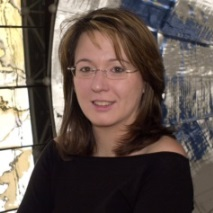Advanced Materials Solutions and Architectures for a New Generation of High-Efficiency CSP Plants
A special issue of Materials (ISSN 1996-1944). This special issue belongs to the section "Advanced Composites".
Deadline for manuscript submissions: closed (20 April 2023) | Viewed by 11496
Special Issue Editors
Interests: solar treatment and processing of materials; high temperature solar process heat; CSP for materials; solar furnaces
Special Issue Information
Dear Colleagues,
The development of advanced materials solutions and innovative architectures are two of the main research priorities for the advancement of the concentrating solar power (CSP) technology. This Special Issue will focus on these topics, which are key to improving the performance of the current systems and fostering the development of a new generation of high-efficiency CSP plants.
Novel functional materials; material combinations; advanced architectures; their development, processing, simulation and analysis; and synergies with other advanced technologies can enhance the performance and reliability of key components of CSP plants such as mirrors, receivers, thermal energy storage systems, etc., thus boosting conversion efficiencies beyond the state-of-the-art, taking into account the preservation of the lifetime and the materials resource efficiencies. In this way, it will be possible to increase the efficiency and durability of the CSP facilities and make this renewable energy technology cost-competitive under suitable electricity market conditions.
It is our pleasure to invite you to submit a manuscript for this Special Issue. Full papers, communications, and reviews are all welcome.
Dr. Inmaculada Cañadas
Prof. Dr. Luca Turchetti
Guest Editors
Manuscript Submission Information
Manuscripts should be submitted online at www.mdpi.com by registering and logging in to this website. Once you are registered, click here to go to the submission form. Manuscripts can be submitted until the deadline. All submissions that pass pre-check are peer-reviewed. Accepted papers will be published continuously in the journal (as soon as accepted) and will be listed together on the special issue website. Research articles, review articles as well as short communications are invited. For planned papers, a title and short abstract (about 100 words) can be sent to the Editorial Office for announcement on this website.
Submitted manuscripts should not have been published previously, nor be under consideration for publication elsewhere (except conference proceedings papers). All manuscripts are thoroughly refereed through a single-blind peer-review process. A guide for authors and other relevant information for submission of manuscripts is available on the Instructions for Authors page. Materials is an international peer-reviewed open access semimonthly journal published by MDPI.
Please visit the Instructions for Authors page before submitting a manuscript. The Article Processing Charge (APC) for publication in this open access journal is 2600 CHF (Swiss Francs). Submitted papers should be well formatted and use good English. Authors may use MDPI's English editing service prior to publication or during author revisions.
Keywords
- CSP materials
- CSP architectures
- advanced materials solutions for CSP
- high-efficiency CSP plants
- solar materials ageing
- CSP material lifetime







